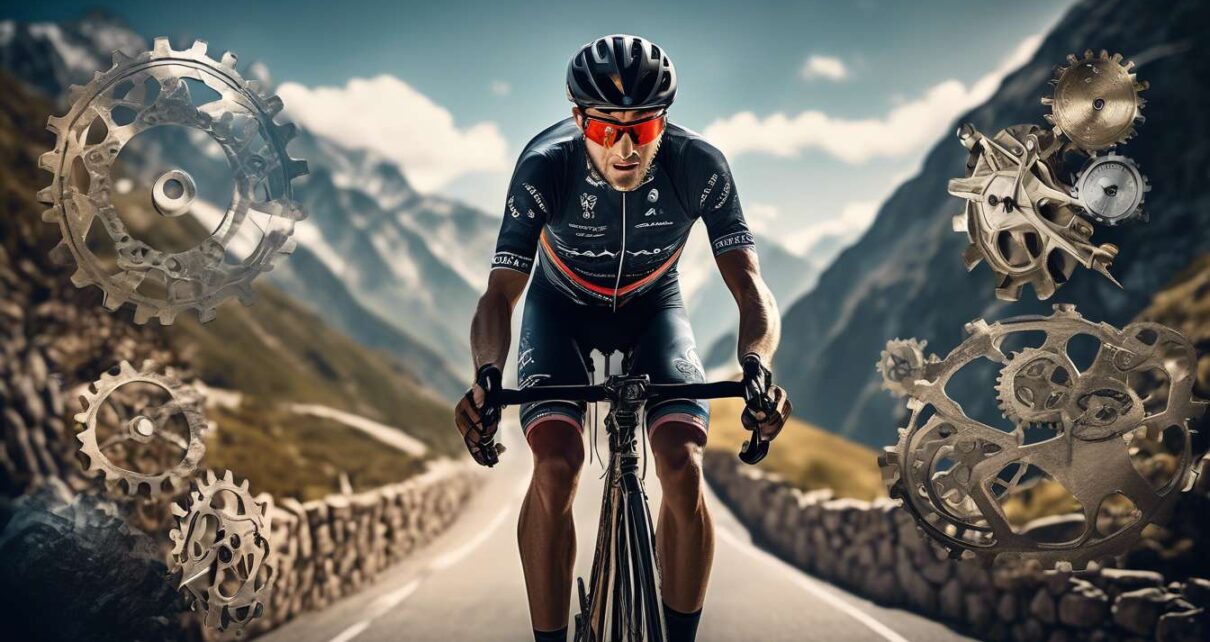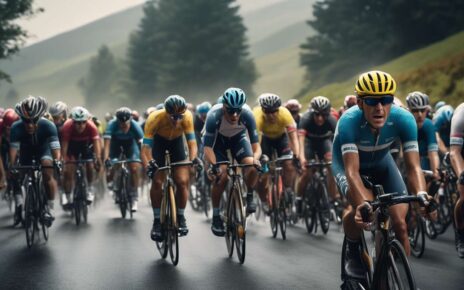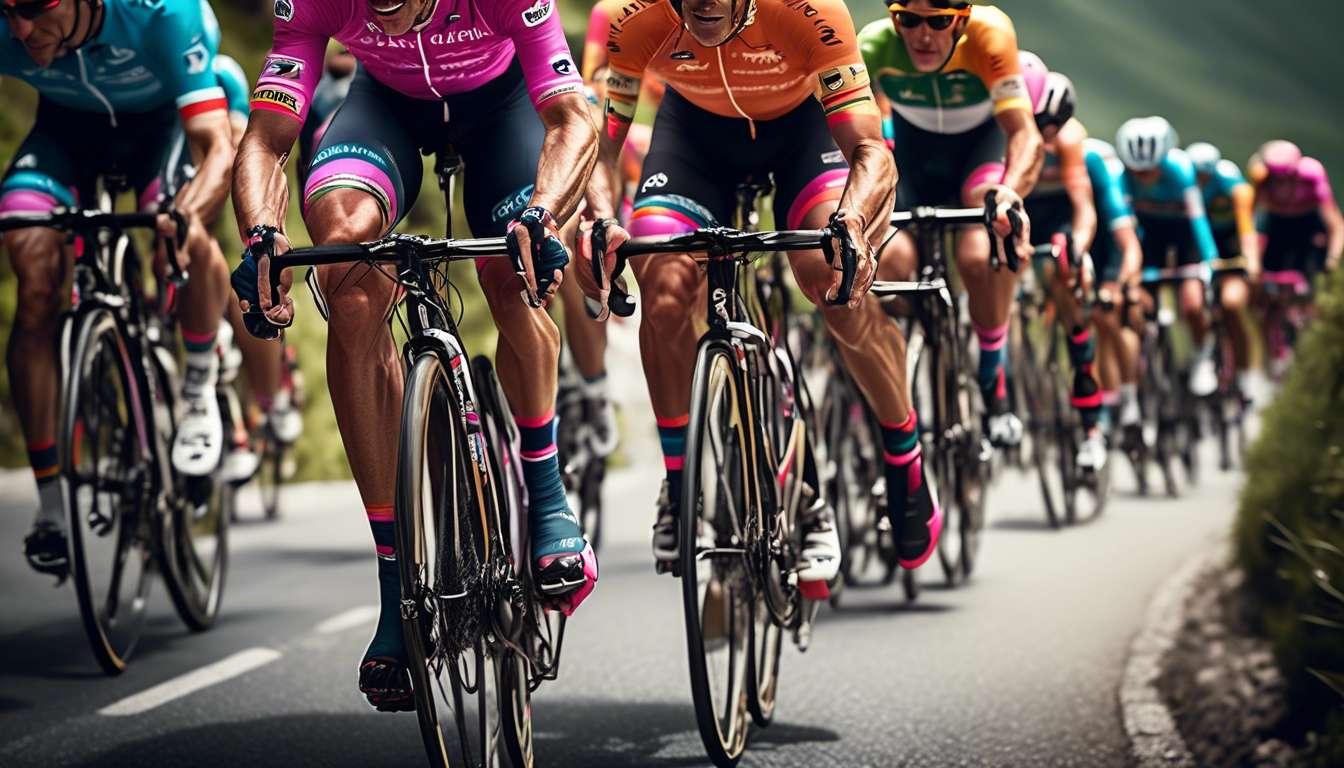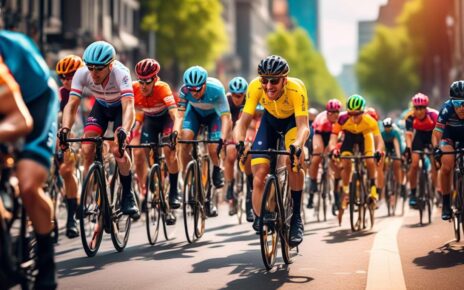As cycling enthusiasts and avid followers of the Grand Tours, we are fascinated by the intricate strategies that underpin not just the races themselves, but also the burgeoning world of cycling betting. Our collective journey has led us to explore how understanding the nuances of these iconic events can enhance our betting strategies.
Each stage offers unique challenges and opportunities, prompting us to delve into several key dynamics:
- Team tactics
- Rider form
- Course profiles
By analyzing these elements, we aim to better predict outcomes and unravel the complexities of odds and probabilities, transforming our passion for cycling into informed betting decisions.
Together, we navigate the unpredictable terrains of:
- Giro d’Italia
- Tour de France
- Vuelta a España
Our goal is to uncover patterns and insights that can give us an edge. By sharing our knowledge and experiences, we hope to guide others in refining their own strategies, enhancing the thrill of these prestigious races.
Insight into Team Tactics
Understanding team tactics in cycling provides us with a crucial edge in developing a successful betting strategy. In this complex sport, team dynamics are pivotal, as each member’s performance directly influences the outcome of races. We must appreciate how teams collaborate to ensure their leader can perform optimally. By observing how riders support each other, we gain insights into potential race outcomes, allowing us to make informed betting decisions.
Course analysis is another vital component. Different routes demand varying strategies, and teams often adjust their tactics based on the terrain. Whether it’s a flat sprint or a grueling mountain stage, understanding how teams adapt can help us predict which riders might excel.
- Some teams might prioritize conserving energy for their sprinter in flat stages.
- Others focus on shielding their climber during mountain segments.
By delving into these elements, we enhance our sense of camaraderie and shared purpose in the betting community, fostering both success and connection.
Decoding Rider Form Variability
Understanding Rider Form Fluctuations
Understanding how a rider’s form can fluctuate throughout a season is key to making informed betting decisions. We need to consider several factors to decode this variability.
Team Dynamics
- Team dynamics play a crucial role in rider performance.
- When a rider has strong support from teammates and a well-defined team strategy, their performance often improves.
- It’s important to analyze how well team members cooperate, as cohesive teams can elevate a rider’s form.
Mental and Physical Aspects
Rider performance isn’t just about physical condition; it also involves:
- Mental resilience
- Adaptability
Riders may peak at different times, influenced by their training schedules and race goals. Observing these patterns helps us anticipate when a rider might perform exceptionally well.
Course Analysis
Course analysis further aids in understanding form variability.
- Some riders excel on flat stages.
- Others dominate mountain climbs.
By examining the course details, we can predict which stages a rider is likely to shine.
Together, these insights empower us to make strategic betting choices, enhancing our connection to the cycling community.
Unveiling Course Profile Strategies
Understanding course profiles can significantly enhance our betting strategies by providing insights into team dynamics and rider performance throughout a Grand Tour.
Course Analysis Benefits:
-
Stage Characteristics:
- Each stage presents unique challenges, such as flats, hills, and time trials.
- By analyzing these, we can identify which riders and teams are likely to excel or struggle.
-
Predicting Performance:
- Course analysis allows us to predict how a stage’s characteristics align with a rider’s strengths.
- For example, a team with strong climbers might strategize differently on a flat stage compared to a mountainous one.
-
Anticipating Strategic Decisions:
- Understanding these nuances helps us anticipate strategic decisions, like when a team might push the pace or conserve energy.
Informed Predictions:
-
Recognizing how certain teams perform on specific terrains enables us to make informed predictions about their overall strategies.
-
This knowledge fosters a deeper connection with the cycling community, making us feel part of a shared journey.
By engaging in precise course analysis, we’re better equipped to make confident, well-informed bets.
Evaluating Climbing Abilities
Assessing a Rider’s Climbing Abilities
Evaluating a rider’s climbing skills is crucial as it directly influences their performance in mountainous stages. This assessment is especially important when betting on Grand Tours, as it helps in predicting outcomes more accurately.
Team Dynamics Influence
A rider’s performance is significantly affected by their team’s dynamics. A strong support team can:
- Shield a climber from wind
- Help set a pace that suits the rider
This support can enhance a rider’s climbing performance.
Course Analysis
Understanding the course is equally important. We must examine the specific climbs in the race:
- Are they long and steady?
- Are they short and steep?
Each rider has unique strengths:
- Some excel on relentless, high-altitude climbs
- Others perform better on punchy ascents
Combining Analysis for a Clearer Picture
By combining the analysis of climbing abilities, team dynamics, and course specifics, we gain a clearer understanding of potential race outcomes.
Community and Connection
Engaging in this analysis connects us with a community that seeks to understand and appreciate the intricacies of cycling. Together, we share insights and celebrate the sport.
Mastering Time Trial Dynamics
Mastering Time Trial Dynamics
Mastering time trial dynamics requires us to focus on the intricate balance between:
- Speed
- Aerodynamics
- Power output
Team Dynamics in Cycling
When we dive into team dynamics, we see how crucial it is for each team to strategically allocate resources to enhance rider performance. It’s about more than just individual talent; it’s also about how well a team supports its riders with:
- The right equipment
- Motivation
Course Analysis
As we analyze courses, we need to consider the unique challenges each one presents. Key factors include:
- Sharp corners that demand skillful maneuvering
- Stretches where pure speed reigns supreme
Understanding these elements helps us predict how riders might perform. We mustn’t forget that each rider’s ability to adapt to various course profiles can make or break their time trial success.
Community Engagement
Together, as a community of cycling enthusiasts, we can better grasp these dynamics. By doing so, we enhance our betting strategies and feel more connected to the thrilling world of Grand Tour cycling.
Predicting Sprint Finishes
In predicting sprint finishes, we must consider the explosive power and positioning strategies that define these high-speed finales. Our shared enthusiasm for cycling brings us together, and understanding the nuances of sprint stages enriches our community experience.
Key to this is analyzing team dynamics, as a well-coordinated team can position their sprinter perfectly for that decisive burst of speed. We look for teams with strong lead-out trains that can:
- Control the final kilometers
- Protect their sprinter from jostling rivals
Rider performance is another critical factor. We focus on:
- A sprinter’s recent form
- Their ability to handle the stress of a chaotic finish
Some riders excel under pressure, while others might falter.
Course analysis plays a vital role, too.
- A flat, straightforward finish favors the pure sprinters.
- Technical sections or uphill drags might suit those with more endurance.
By combining these elements, we sharpen our predictions and deepen our connection to the sport we love.
Navigating Rest Day Impacts
Rest days can significantly alter a rider’s momentum, and understanding their impact on performance in subsequent stages is crucial.
Effects on Riders:
- Some riders thrive after a break, returning with renewed vigor.
- Others might struggle to regain their rhythm.
Team Dynamics:
- Rest days might rejuvenate or disrupt team dynamics.
- A well-rested team can provide better support to riders in upcoming stages.
Factors Influencing Performance Post-Rest Day:
- Team Strategy: The approach taken by the team during the break.
- Individual Recovery: How well a rider recovers personally.
Course Analysis:
- Consider the terrain awaiting riders after a rest day.
- Challenging mountain stages might favor climbers who’ve recovered well.
- Flat stages could benefit sprinters eager to capitalize on their freshness.
Conclusion:By understanding these nuances, we can make informed betting decisions and bond as a community of savvy cycling enthusiasts.
Uncovering Podium Contenders
Identifying Potential Podium Contenders
Identifying potential podium contenders requires a keen eye for form and recent performances in key stages. As cycling enthusiasts, we know how vital it is to analyze rider performance over varied terrains.
Key Factors to Consider:
-
Rider Performance:
- Evaluate recent performances in different stages.
- Consider how riders perform on various terrains.
-
Team Dynamics:
- A strong team can protect and propel a leader to the podium.
- A weak team might leave a rider vulnerable in crucial moments.
-
Course Analysis:
- Each Grand Tour presents unique challenges, such as:
- Grueling mountain stages
- Intense time trials
- Determine if the route favors:
- Climbers
- Time trialists
- All-rounders
- Each Grand Tour presents unique challenges, such as:
Strategy:
By understanding the course’s demands, we can better predict which riders will excel. Aligning predictions with the course characteristics will enhance accuracy.
Collaboration:
Together, tapping into this collective knowledge and passion, we can spot those golden opportunities. It’s about:
- Sharing insights
- Learning from each other
- Feeling the thrill of the chase as we uncover those podium contenders.
What are the legal regulations surrounding betting on cycling events?
When it comes to legal regulations around betting on cycling events, it’s essential to understand the rules and restrictions in place.
Key Points to Consider:
-
Compliance with Regulatory Bodies:
- Follow the guidelines set by regulatory authorities.
- Ensure fair play and adherence to the law.
-
Importance of Staying Informed:
- Stay updated on current regulations to enjoy betting responsibly.
- Respect boundaries designed to protect participants and maintain sport integrity.
By staying informed about these regulations, we can enjoy the excitement of betting on cycling events while also respecting the boundaries put in place to protect all participants and maintain the integrity of the sport.
How can historical data be used to improve betting strategies in Grand Tours?
When it comes to betting strategies in Grand Tours, historical data is crucial. By analyzing past performances, we can identify patterns and trends that can help us make more informed decisions.
This data allows us to:
- Spot potential favorites
- Understand course dynamics
- Predict potential outcomes
Overall, utilizing historical data in our betting strategy for Grand Tours can give us a competitive edge and increase our chances of success.
What are the most common betting markets available for cycling?
When it comes to cycling, the most common betting markets include:
- Race Winners: Bettors can place wagers on who they think will win the overall race.
- Stage Winners: This involves betting on the winner of individual stages within the race.
- Jersey Classifications: Bettors can also focus on various jersey classifications, such as the prestigious yellow jersey in the Tour de France.
These markets offer a wide range of opportunities for fans and bettors to engage with the sport and add excitement to the races.
Betting on cycling can truly elevate the viewing experience and make each stage even more thrilling to follow.
Conclusion
As you delve into the world of cycling betting, remember to keep a keen eye on several key aspects:
- Team Tactics: Understand how teams strategize and support their leading riders.
- Rider Form: Assess the current performance levels and physical condition of riders.
- Course Profiles: Analyze the terrain and elevation to predict which type of rider might excel.
- Climbing Abilities: Evaluate riders’ strengths in mountainous stages.
- Time Trial Dynamics: Consider how riders perform in individual time trials.
- Sprint Finishes: Identify top sprinters and their chances in flat stages.
- Rest Day Impacts: Monitor how riders recover and perform after rest days.
- Podium Contenders: Focus on riders likely to finish in top positions.
By mastering these aspects, you can enhance your betting strategy and increase your chances of success in Grand Tours.
Happy betting and may the odds be ever in your favor!




